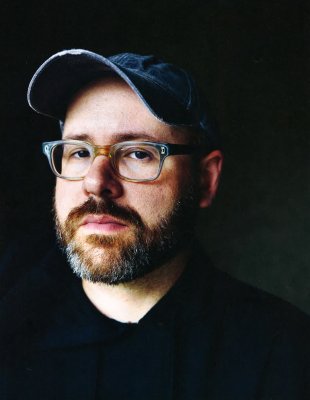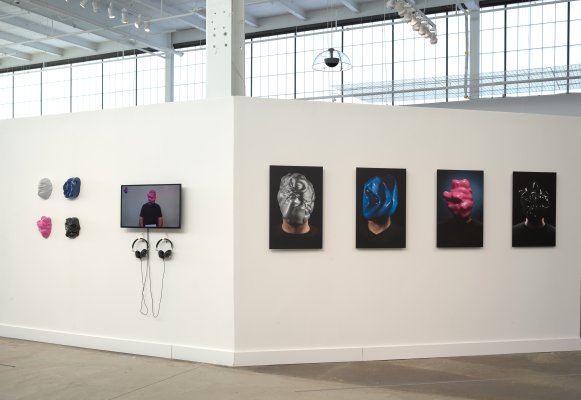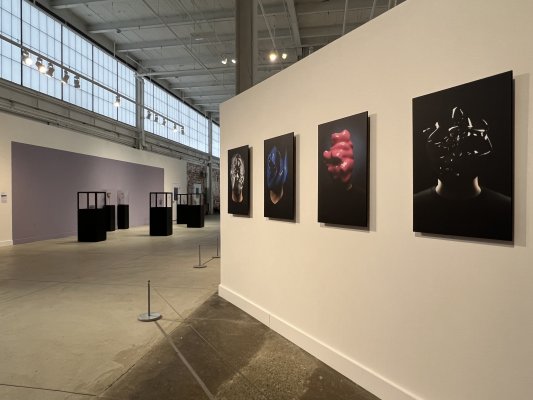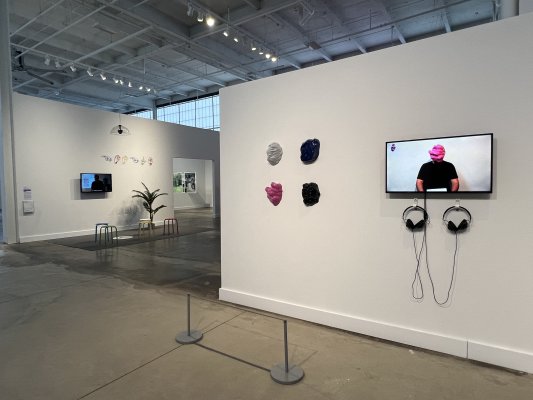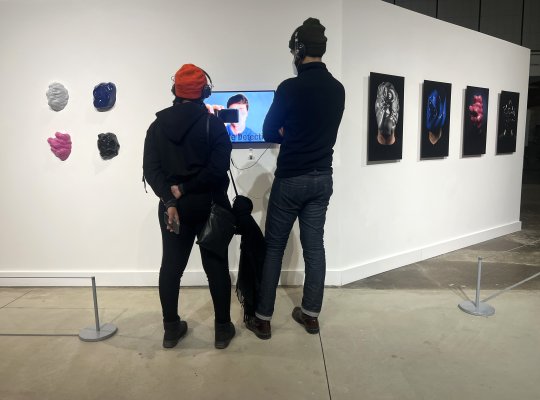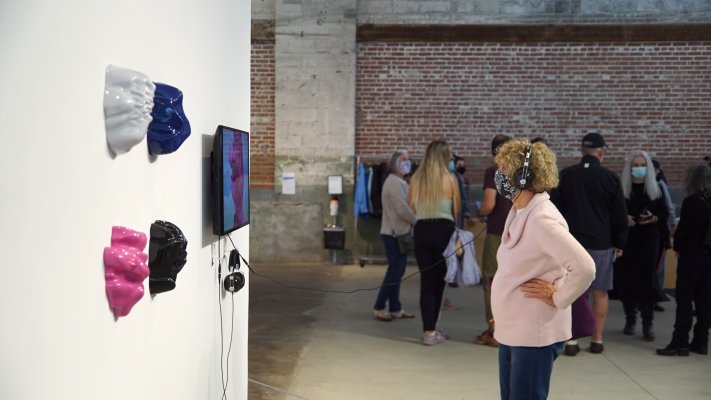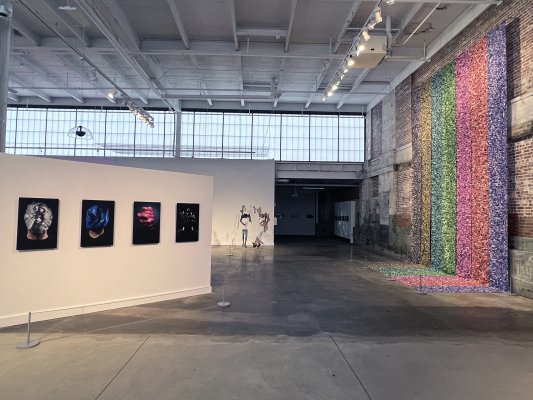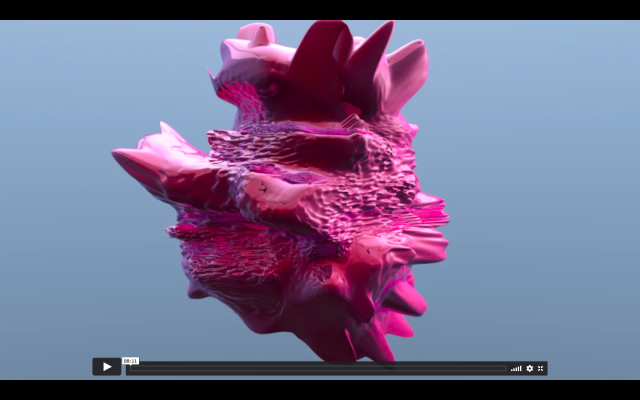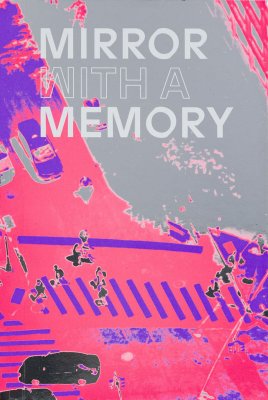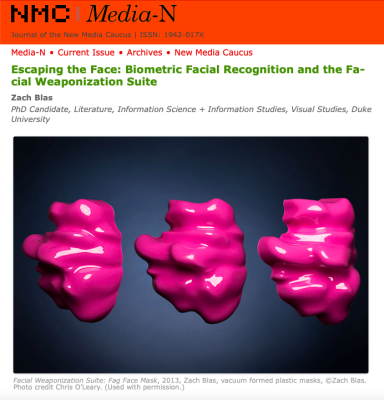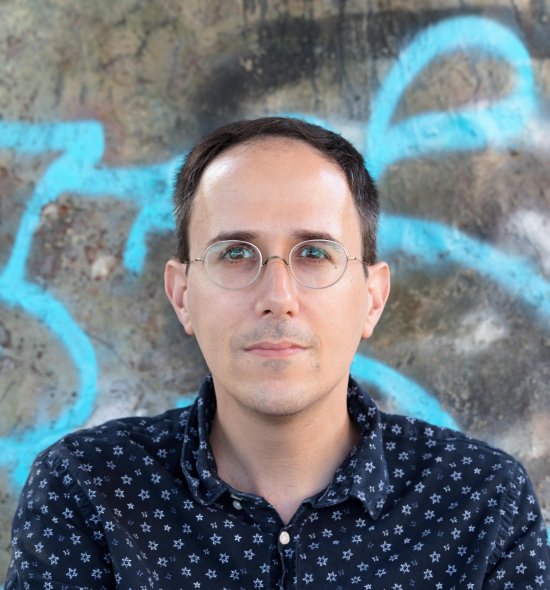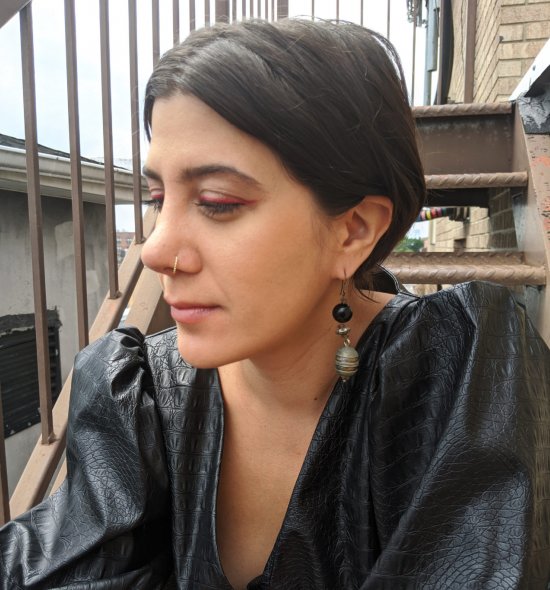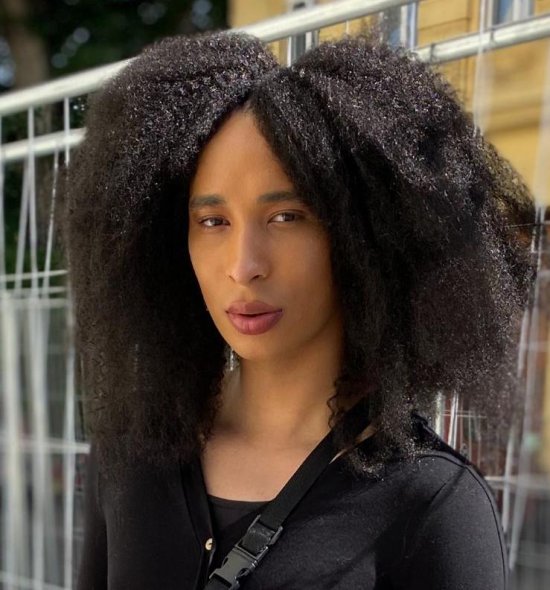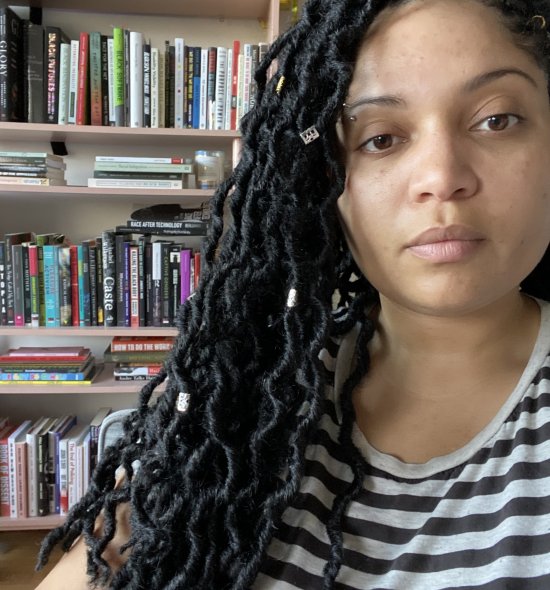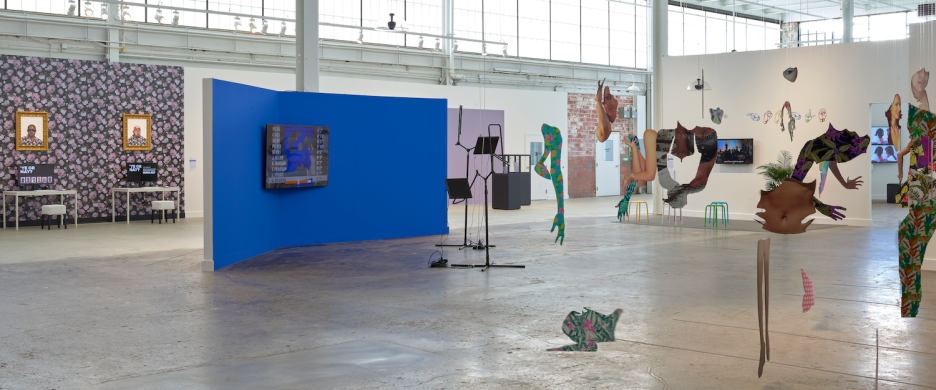Facial Weaponization Suite, 2012–14
Four painted vacuum-formed recycled polyester masks; digital video (color, sound) displayed on monitor; and four inkjet prints
Running time: 8 minutes, 10 seconds, looped
Courtesy of the artist
"I don't think the work is just simply about creating masks to hide oneself. It’s also thinking about the failures of political representation, when it is rooted in fixed identities that exclude broad ranges of the population. What does it mean to achieve political recognition? And is it a good or a bad thing? Or some messy mix of the two?"
—Zach Blas
Surveillance is often justified as a public safety measure, but it can also expose people, especially marginalized communities, to harm and even danger. In 2012, Zach Blas (he/him/his) organized four public workshops in cities across North America to discuss how biometric surveillance erodes privacy and creates new opportunities for discrimination against gay men, women, and Black, Latinx, and Indigenous people.
At each workshop, Blas used a Microsoft Kinect gaming console to scan the faces of the participants. He then digitally combined these scans to make each group their own color-coded “masks,” which make their wearers undetectable by facial recognition software. On a more philosophical level, by giving each group their own shared “identity,” Blas proposes that categories such as “gay” or “Black” are more like “masks” given to us by society than essential facts emerging from our own bodies, suggesting the limits of any politics based on those identities. For example, demands for increased “diversity” in our politics or culture can marginalize individuals who don’t fit within narrow social categories.
The video is freely available for you to experience by visiting zachblas.info/works/facial-weaponization-suite/.
